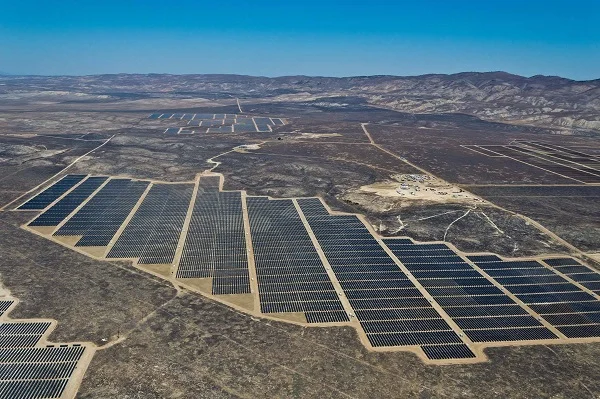In a high-profile critique of utility-scale renewable energy, Robert Bryce wrote in the New York Times in 2011 that energy sources like sunlight and wind “(require) vast amounts of natural resources – most notably, land.”
Maybe so. But did you know that “on a life-cycle electricity-output basis – including direct and indirect land transformation – utility-scale PV in the U.S. Southwest requires less land than the average U.S. power plant using surface-mined coal”?

Part of California Valley Solar Ranch (image via SunPower)
This is one fun fact the National Renewable Energy Laboratory cites in presenting a new report, “Land-Use Requirements for Solar Power Plants in the United States.” What makes the report especially useful is that unlike previous work on the subject, it’s not strictly theoretical. Although the authors look forward to having an even bigger database of projects to deal with, with 2.1 gigawatts worth of utility PV installed by the third quarter of 2012, the researchers were able to look at well over dozens of projects between 1 and 20 MW in capacity, 32 larger than 20 MW, and 25 concentrating solar projects.
“Having real data from a majority of the solar plants in the United States will help people make proper comparisons and informed decisions,” lead author Sean Ong said in a statement.
According to the researchers, “A large fixed tilt photovoltaic (PV) plant that generates 1 gigawatt-hour per year requires, on average, 2.8 acres for the solar panels. This means that a solar power plant that provides all of the electricity for 1,000 homes would require 32 acres of land.”
Put another way, that’s about 1,400 square feet per home, a plot about 37 feet by 37 feet.
“The numbers aren’t good news or bad news,” team member Paul Denholm said. “It’s just that there was not an understanding of actual land-use requirements before this work. However, we were happy to find out that many of the solar land use ranges and estimates used in the literature are very close to actual solar land use requirements that we found.”
Given that, the earlier estimate by the NREL that held that the U.S. could meet all electricity demand by covering 0.6 percent of nation’s total area in PV apparently remains operative.
The full report, “Land-Use Requirements for Solar Power Plants in the United States,” is available online as a 47-page PDF.
* Pete Danko, EarthTechling







